Reading time: 20 minutes
(If you missed Part Four, click here…)
As it was…
It’s Thursday, December 15, 1977. Talking Heads have released their single ‘Psycho Killer’. The MP for Truro, David Penhaligon, vows to grill the Transport Minister on the delays to, and the proposed route of, Cornwall’s A30 dual carriageway. In Dortmund, Wales have pulled off a shock 1-1 draw against World Champions West Germany1.
That evening, under less-than perfect floodlights remembers Malcolm Bennetts, St Ives are hosting Camborne.
Battle of the giants…
| Played | Won | Drawn | Lost | For | Against | |
| St Ives | 6 | 6 | 0 | 0 | 199 | 23 |
| Camborne | 5 | 4 | 1 | 0 | 118 | 39 |
| Redruth | 7 | 5 | 1 | 1 | 152 | 62 |
| Penryn | 7 | 5 | 0 | 2 | 109 | 35 |
| Penzance-Newlyn | 9 | 6 | 0 | 3 | 146 | 94 |
| Newquay Hornets | 10 | 6 | 0 | 4 | 107 | 104 |
| Hayle | 5 | 2 | 0 | 3 | 72 | 32 |
| Falmouth | 6 | 2 | 0 | 4 | 90 | 50 |
| St Austell | 7 | 2 | 0 | 5 | 69 | 199 |
| Truro | 9 | 1 | 0 | 8 | 52 | 329 |
Not only was this a top of the Merit Table clash but, in beating Hayle in the first round of the CRFU Cup, St Ives had set the stage
…for a battle of the giants when they take on mighty Camborne in the next round.
West Briton, December 8, 1977, p26
Before kick-off that evening, there was little or nothing to separate the two sides. They were the top dogs of Cornish rugby. Last season’s Cup and Merit Table winners, Falmouth, were experiencing a slump. Near the foot of the Table this time round, lowly St Austell had contrived to knock them out of the Cup2.
If Camborne wanted trophies with which to decorate their Centenary Season – and they undoubtedly did – the ‘Hakes’ were the team to beat.
For their part, St Ives may have seen themselves as harshly dealt with back in 1976-77. Despite having won as many Merit Table games as Falmouth, and scoring more points, they still came second3.
Both teams wanted this one badly.
The bogey team…
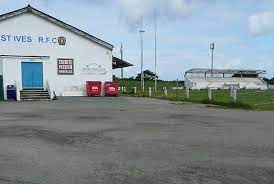
Camborne were pretty much at full strength, though Paul Ranford was out injured, with Michael Woods getting the nod:

There was talent everywhere in the St Ives XV. Young wing Roger Randall would soon earn a full County cap; Frank Butler puts 10 Ian Hart in the same troublesome bracket as Redruth’s Brett Pedley; Nigel Pellowe singles out centre Tom Bassett as a definite hard case.
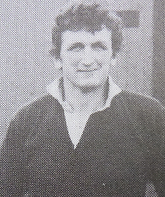
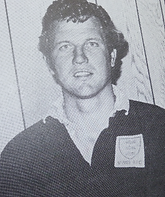
The St Ives pack was “always strong”, Frank Butler told me. Malcolm Bennetts praised their skipper, John Trevorrow, as
…the best all-round hooker I played against…
Then there was the Corin brothers, a pair so volatile they would often fight each other, said Bennetts, to mention nothing of Peter Hendy and Simon Moody. Vastly experienced and very tough, Robert Mankee remembers that
…if your head was on the deck…
and they were nearby, anticipate a flashing boot in the face.
But that wasn’t all. St Ives, agree Jumbo Reed and Frank Butler, were Camborne’s “bogey” team:
…we rarely got the better of them…
Frank Butler
For whatever reason, Camborne seemed to think St Ives had the wood over them.
Whenever they played, some occurrence, or pure fate, would contrive against Town coming away victorious.
Something’s bound to go bleddy wrong…
This encounter was not an entertaining spectacle6, but would have been compellingly tough. All the senior Cornish teams had been playing each other over many seasons, with grievances, resentments, and open feuds integral to every fixture. For example, here the Corin boys would have missed another bust-up with the injured Paul Ranford: they always issued a pre-match warning that they were going to get him, and Ranford would always retaliate in kind.
(Paul recalls, though, that if he wasn’t around, the Corins had plenty of differences with the other Camborne players to satisfy themselves. He recalls an instance in another match where Roger Corin swung a meaty girt backhander at Chris Durant. Durant ducked, and Corin’s best effort buried itself into Jumbo Reed’s face, sparking him out. Ranford “couldn’t stop laughing”.)
As Robert Mankee put it:
…the first twenty minutes of any Merit Table game…was war…
And that night, St Ives exploited the home advantage. The floodlights were poor in the opinion of Malcolm Bennetts (he likened being in a scrum akin to being down a mine, and he would know), and St Ives had adapted their game accordingly.
If this was war, The Hakes opted for an aerial bombardment in the winter night, Ian Hart unleashing endless up-and-unders at full-back Nigel Pellowe.
It was truly shooting in the dark. St Ives were banking on Pellowe, normally safety itself, eventually coming a cropper in the gloom.
The tactic paid off. Pellowe got snagged in possession with his back to his own goal, and St Ives ransacked him. Tommy Bassett crashed over the line. 4-0, St Ives.
Chris Durant quickly nailed a penalty. Half-time: 4-3.
The rest of the game was attritional and tense. Although Chris Nicholas was Town’s outstanding runner, both sides had apparently abandoned all thought of scoring tries.
And then it happened.
The freak…
St Ives’ Paul Sweeney attempted a snap drop-goal, with his left foot. Paul Sweeney is actually right-footed. Mankee, doing what a good scrum-half does, attempted to charge it down.
Here’s Mankee:
if it wasn’t for me, [the kick] wouldn’t have gone over…
Indeed, Sweeney’s kick was such a dreadful shank that it was always missing the posts. However, the ball struck Mankee’s shoulder, and this impact somehow corrected its path. Mankee could only turn and watch in horror as the ball, guided by an unseen hand, floated over the crossbar. St Ives 7, Camborne 3.
Half an hour to play. In the dark.
In the crowd was Merrill Clymo, and he, like many a Camborne man, could barely believe what he’d seen either. He later described the drop-goal as a “freak” occurrence7.
Also in the crowd was a reporter for the Western Morning News. He described the kick as
…the luckiest drop-goal the fishermen are ever likely to see…
16th December, 1977. Courtesy Paul Sweeney
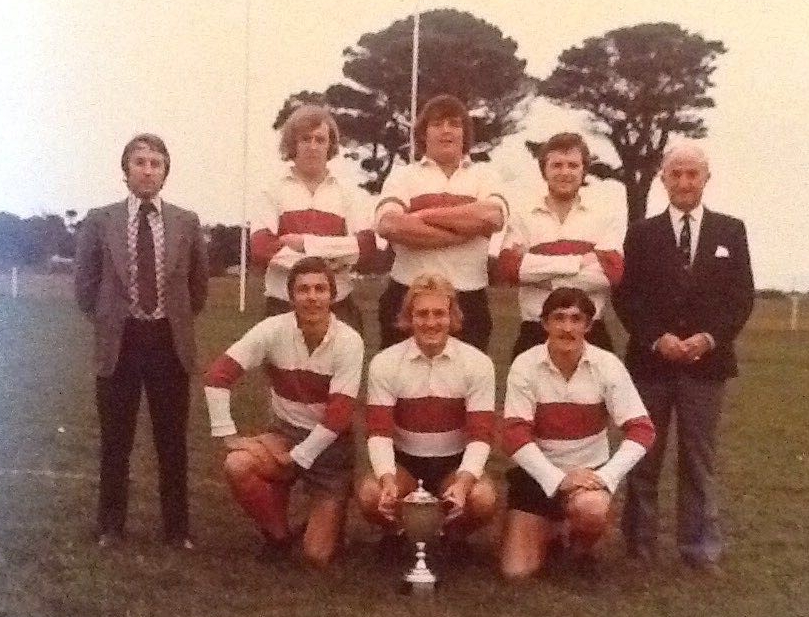
Durant kicks another penalty to make it 7-6. Dave Edwards, in an attempt to emulate Sweeney, tries a drop-goal with his left foot too. Edwards actually is left-footed. He misses. Edwards denies all knowledge of this today, though one imagines that, if his kick had been successful, he would wax lyrical on the memory.
Five minutes left. Camborne take the lead, 7-9, with a Nigel Pellowe penalty in front of the posts. Surely, this is the winning kick. Surely, nothing could deny Camborne now, could it?
It could.
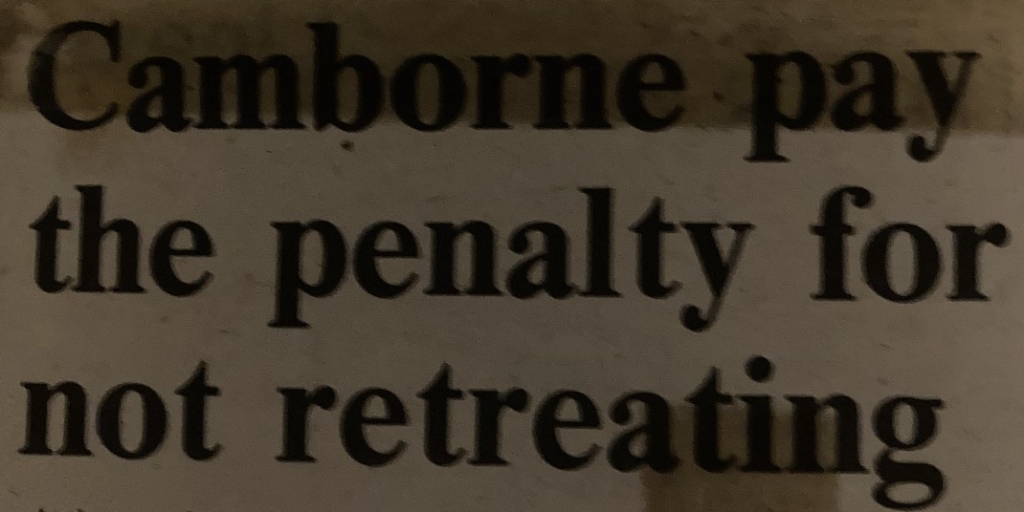
Camborne conceded a penalty at a scrum, and then inadvertently failed to retire the requisite ten metres in time. The referee brought the penalty forward ten metres, and into the kicking range of the St Ives wing, Mike Rowe.
10-9, St Ives. Camborne only had themselves to blame. Watching events unfold on the bench was Jumbo Reed:
…we were really pissed off…we should’ve won that game…
But there was little time for analysis, or possible recriminations. Two days later, Newquay were travelling to the Rec.
Camborne make amends…8
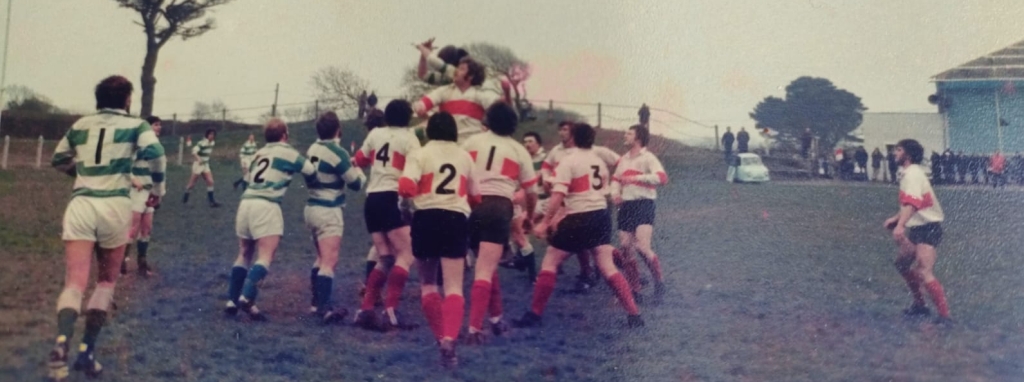
Although the Packet tried to talk up Newquay’s performance, a 32-10 scoreline tells you all you need to know9.
David May, who that season was actually leading the Reserve XV, deputised for an injured Pellowe at full-back, but Town didn’t lack a cutting edge. May featured in several flowing moves and was unlucky not to score himself. As he himself put it:
…there was no weakness, even when players stepped up from the Seconds…
A dominant pack allowing Tanzi Lea at 10 to do what he does best – run the ball, anytime, anywhere – meant tries for wings Edwards and Nicholas, centre Colin Taylor, Mankee and Lea himself. Durant’s kicking was assured and Camborne were comfortable victors.
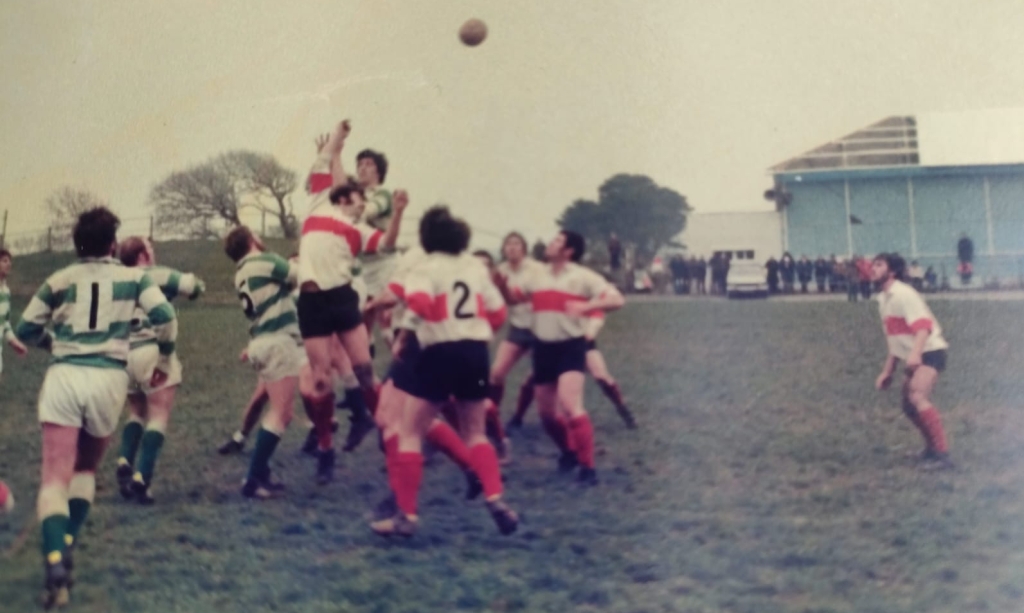
The other Centenary Season…
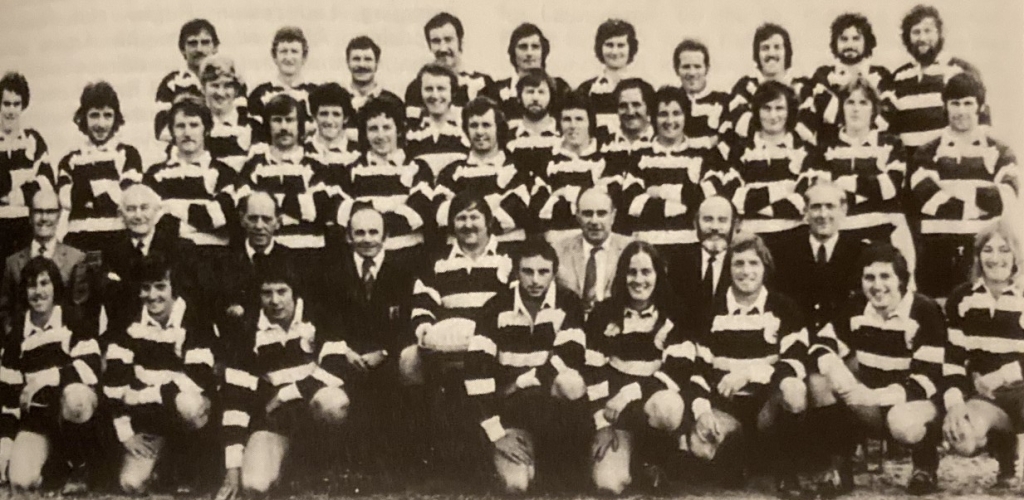
Like Camborne, 1977-78 was also Hayle RFC’s Centenary Season. Though runners-up to Falmouth in the 1976-7 CRFU Cup Final (which, Hayle’s Robert Tonkin remembers, they would have won had the normally deadly Dave O’Mahoney not missed a conversion), they
…didn’t fancy our chances so much in 77-78…three or four people retired and left us without a lot of experience…
Robert Tonkin, Hayle RFC
O’Mahoney was still playing, but long-serving 10 Dave Mungles had finished. When Camborne arrived at Memorial Park on Christmas Eve, the Hayle XV were fielding seven of their Reserves10.
Tonkin, normally a centre, had been moved to fly-half, and was up against Tanzi Lea. Tanzi Lea, behind a strong pack.
How to neutralise Camborne?
Hayle may have had a scratch XV but, like St Ives, they realised the importance of a gameplan against Camborne. You couldn’t expect to simply go toe-to-toe with the Town pack and win.
To beat Camborne, you had to play a way Camborne didn’t want to play. Like, for example, the St Ives method, hoisting bombs in the dark at Nigel Pellowe and making Town’s forwards track back. No forward likes the ball behind them.
Hayle’s approach was to play to their strength, which was having “a very mobile team”, Robert Tonkin remembers:
To neutralise the Camborne pack, Hayle would try to move them around the pitch…
In other words, tire Camborne out.
It didn’t work.
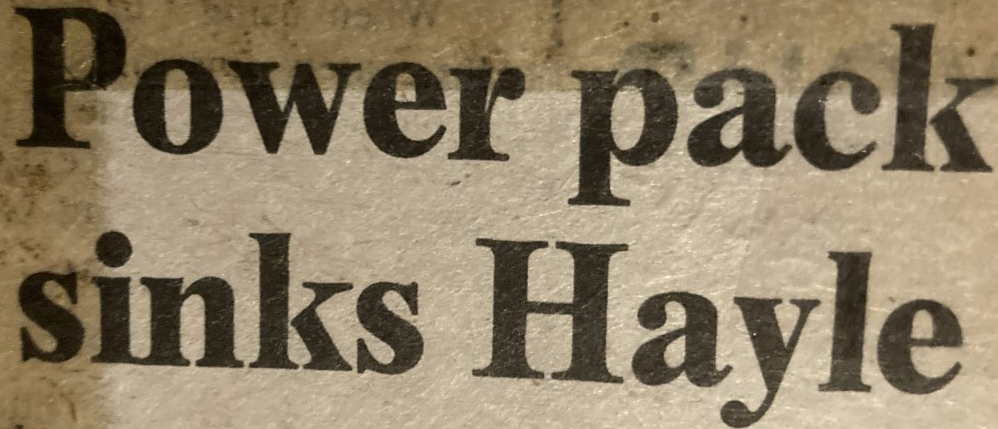
To dictate play to Camborne, or any XV, you must first win possession of the ball, and here Hayle were at fault. They couldn’t prise the ball off Camborne, with the ever-grafting Frank Butler a “conspicuous” thorn in their side11.
Yet another blindside break by Mankee put Tanzi Lea in for a try – Robert Tonkin was delighted when I reminded him of this. Durant added three penalties to the conversion, and Bob Lees scored an opportunist’s try, from a “wild” Hayle pass12.
Bob Lees…
Mr Reliable…
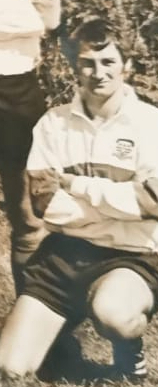
Bob Lees is a modest man, who doesn’t tend to paint too glamorous a picture of his rugby days. Listening to him, you may be guilty of wondering how he kept his place in the Camborne XV at all:
…I wasn’t too concerned with league positions…I just got on with my game…I was always a centre that played off others…I wasn’t creative…
This self-effacing style masks an independent and ambitious streak.
Chief Petty Officer Robert Lees, in fact, was the first Navy non-com permitted by the Fleet Air Arm at Culdrose to play senior rugby. To achieve this, he canvassed for permission from his Commanding Officer.
At first, he played for St Ives. However, a perceived preference for “locals” left Lees feeling that he wasn’t being given a fair go, so he joined Camborne, and quickly found his niche.
Lees’ playing experiences with the Navy found him well-prepared for the demands of Camborne’s Centenary Season. He was more than used
…to being up against classy opposition…
…and therefore not fazed by the challenges ahead.
His team-mates rapidly recognised his qualities. David May describes him as a
…quiet man with good pace, effective at centre or wing…
Jumbo Reed is also appreciative of his “hard running”, and the versatility that enabled him to play centre or wing.
Frank Butler goes into more detail. Bob was a
…most reliable rugby player…[with a] razor-sharp rugby brain…[who] always had plenty to say when discussing tactics…knew the game well and was never beaten…
Alan Truscott is more succinct. For him, Bob Lees was
Mr Reliable…
He certainly was. Bob made forty appearances for Camborne that season, scoring 15 tries. Though not, by his own admission, a playmaker (and therefore his preference was always for Tanzi Lea at 10), he knew where to be, what to do, and where the tryline was. Camborne needed its finishers, and Lees was definitely one of them.
‘Tis the Season to be Jolly…
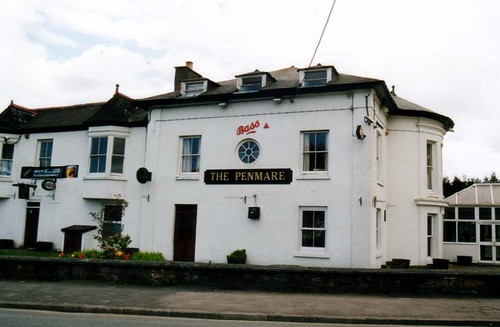
Hayle 6, Camborne 19.
The players from both sides enjoyed a Christmas Eve at the nearby Penmare Hotel (a favoured nightspot that season). Robert Tonkin may have spent some of the evening wondering what Dickie Wells, the “main man” for pointing out any shortcomings among Camborne’s opposition, would say to him at Holman’s when he next clocked in.
For the moment, tomorrow was Christmas Day, and the players could look forward to some indulgent time at home with their families.
But maybe not too much. The day after, Boxing Day, was the date of the biggest, and one of the oldest, rugby clashes of the Cornish season.
Camborne are playing Redruth.
And you can read all about that in the Christmas Rugby Special, here…
Many thanks for reading
References
- From that day’s Daily Mirror, p32, and West Briton, p1. For more on Penhaligon and the development of the A30, see: https://www.sabre-roads.org.uk/wiki/index.php?title=A30/History_-_Connecting_Cornwall
- West Briton, December 8, 1977, p26
- See the opening to Rugby Special ~ Part One here
- See: https://www.stivesswrfc.co.uk/history
- See: https://www.stivesswrfc.co.uk/history
- The narrative is based on the report in the Packet, December 21, 1977.
- From the programme notes to Camborne v Newquay Hornets, December 17, 1977.
- From the Packet, December 21, 1977.
- December 21, 1977.
- West Briton, December 29, 1977, p14.
- From the Packet, December 28, 1977.
- From the Packet, December 28, 1977.
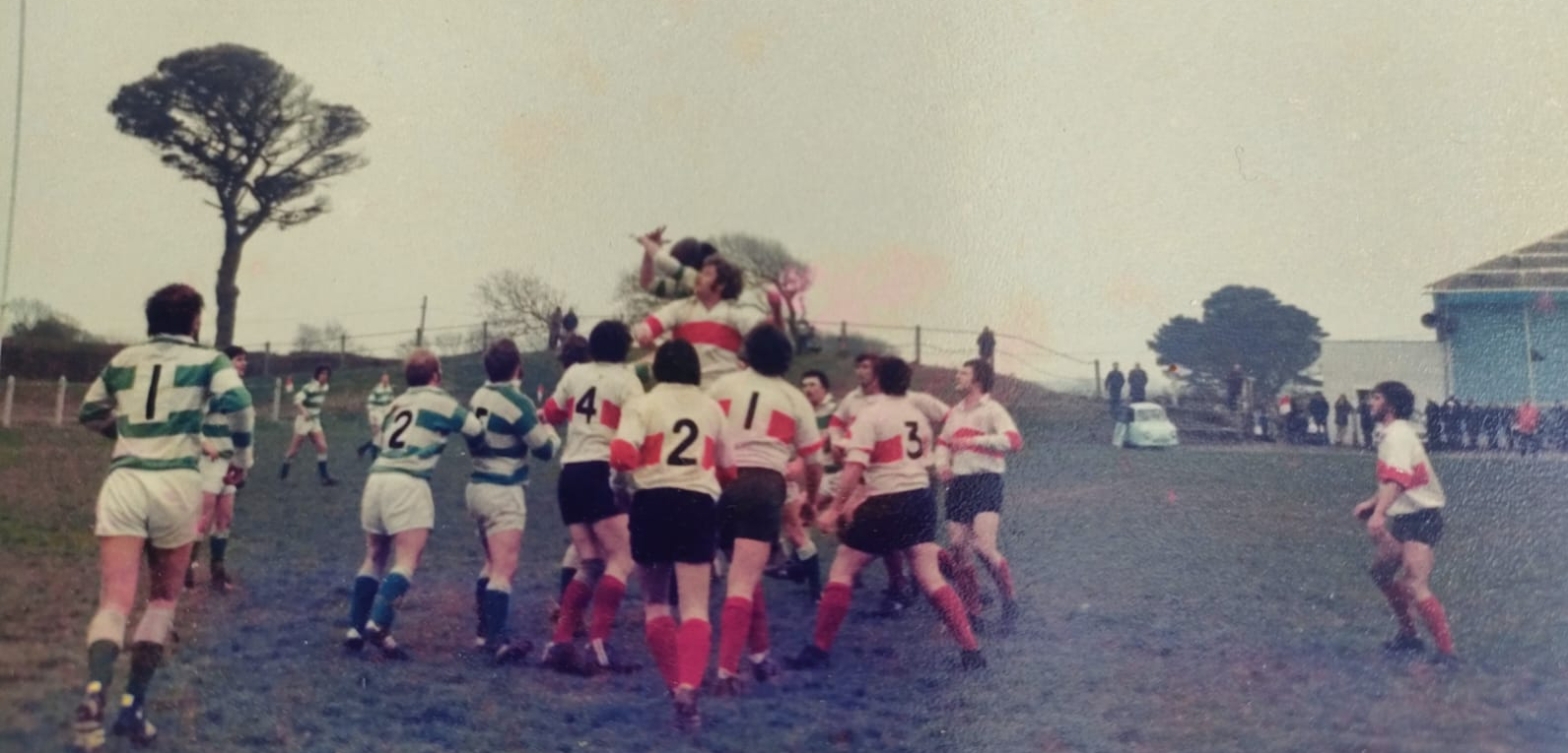
Some of the match details recalled by the players is remarkable; shows how memorable it was for them being involved.
LikeLike
Thank you once again Fran for this super series!
LikeLike
This is great reading
LikeLike
Cheers mate
LikeLike
Another Great One Francis; keep it going>
LikeLike
Thankyou Bob!
LikeLike
Interesting takes me back many years
I do not follow Facebook but Simon Wolnough mentioned you where recreating Centenery year so I had a look
LikeLike
Great to hear Richard – stay tuned!
LikeLike